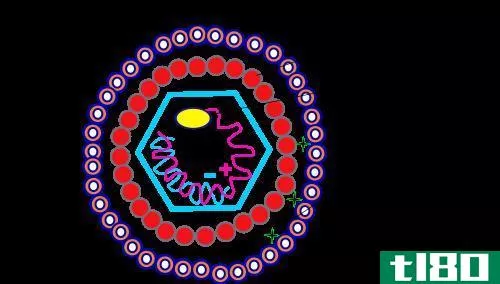肝炎类型
关键区别:肝炎是一种由多种病毒引起的疾病。它主要引起肝脏炎症,其特征是肝脏组织中存在炎症细胞。这种情况可能是自限性的,这意味着随着时间的推移,它会自行痊愈,也可能导致纤维化,即肝脏瘢痕和肝硬化。引起肝炎的病毒有五种:甲型肝炎病毒(HAV)、乙型肝炎病毒(HBV)、丙型肝炎病毒(HCV)、丁型肝炎病毒(HDV)和戊型肝炎病毒(HEV)。然而,肝炎也可以由有毒物质引起,如酒精、某些药物、一些工业有机溶剂、植物、植物、植物、植物、植物、植物、植物、植物、植物、植物、植物、植物、植物等,其他感染和自身免疫疾病。
肝炎是一种由多种病毒引起的疾病。它主要引起肝脏炎症,其特征是肝脏组织中存在炎症细胞。这种情况可能是自限性的,这意味着随着时间的推移,它会自行痊愈,也可能导致纤维化,即肝脏瘢痕和肝硬化。

肝炎患者可能会或可能会表现出症状,事实上大多数患者表现出有限或没有症状。然而,在那些确实表现出症状的人中,常见的症状可能包括黄疸、厌食、食欲不振、不适、腹痛、恶心、发热、腹泻、疲劳等。
引起肝炎的病毒有五种:甲型肝炎病毒(HAV)、乙型肝炎病毒(HBV)、丙型肝炎病毒(HCV)、丁型肝炎病毒(HDV)和戊型肝炎病毒(HEV)。然而,肝炎也可由有毒物质引起,如酒精、某些药物、一些工业有机溶剂、植物、其他感染和自身免疫性疾病。
各种类型的肝炎都能引起相似的症状,因此很难诊断出病因。然而,血液测试检查抗体水平,特别是对个别病毒可以帮助诊断的责任病毒。然而,这些病毒的传播方式不同,对肝脏的影响也不同。

肝炎可以是急性的也可以是慢性的。急性肝炎持续不到六个月,慢性肝炎持续时间更长。甲型肝炎只出现在急性或新发感染,不会成为慢性。它也不需要治疗。乙型肝炎和丙型肝炎也可以开始急**染,但在某些情况下可能会变成慢性疾病,并导致长期的肝脏问题。丁型肝炎只影响乙肝患者,戊型肝炎与甲肝非常相似。
五种肝炎的详细比较:
| 甲型肝炎 | 乙型肝炎 | 丙型肝炎 | 丁型肝炎 | 戊型肝炎 |
| 甲型肝炎是由甲型肝炎病毒引起的肝脏炎症。它的严重程度从持续数周的轻微疾病到持续数月的严重疾病不等。然而,它很少致命。 | 乙型肝炎是由乙型肝炎病毒(HBV)感染引起的一种传染性肝病。它的严重程度从持续数周的轻微疾病到严重的终身疾病不等。乙型肝炎可以是“急性”或“慢性”。 | 丙型肝炎是由丙型肝炎病毒感染引起的一种传染性肝病。它的严重程度从持续数周的轻微疾病到严重的终身疾病不等。丙型肝炎可以是“急性”或“慢性” | 丁型肝炎是一种由丁型肝炎病毒(HDV)感染引起的疾病,它是一种亚病毒卫星,因为它只能在有乙型肝炎病毒(HBV)的情况下传播。 | 戊型肝炎是由戊型肝炎病毒(HEV)感染引起的一种传染性肝病。 |
| 甲型肝炎病毒存在于甲型肝炎患者的粪便中。它通常通过饮用水或被含有病毒的粪便污染的食物传播。 | 乙型肝炎是一种*****。它通过接触感染者的血液、**或其他体液传播。 | 丙型肝炎病毒通过与感染者的血液接触传播。丙型肝炎导致肝脏肿胀,并可能导致肝脏损伤,从而导致癌症。可能导致肝脏结疤,称为肝硬化。 | 丁型肝炎病毒已经感染了乙肝病毒的人。它通过接触受感染的血液、沾有HDV的脏针头以及与HDV感染者发生无保护***(不使用避孕套)传播。丁型肝炎引起肝脏肿胀。它增加了肝衰竭的可能性,更快的进展为肝硬化,并增加了发展为肝癌的机会。 | 戊型肝炎病毒存在于戊型肝炎患者的粪便中。它通常通过饮用水或被含有病毒的粪便污染的食物传播。 |
| 与受感染者一起生活。与受感染者发生性关系,尤其是**。前往甲肝常见的国家旅行。注射和非注射毒品使用者。儿童和托儿所的雇员。在过去六到九个月内感染甲肝的人。 | 乙型肝炎病毒在人与人之间通过直接的血液接触或受感染者的**和**液传播。乙型肝炎是卫生工作者的一个重要职业危害。常见的传播方式有:围产期(从母亲到婴儿出生时)、幼儿期感染(通过与受感染家庭接触的密切人际关系而引起的不明显感染)、不安全的注射行为、不安全的输血、无保护的性接触。 | 丙型肝炎病毒通过与感染者的血液接触传播。这可以通过以下方式实现:接受受污染的输血、血液制品和**移植;在卫生保健场所使用受污染的注射器和针头刺伤进行的注射;注射用药;围产期(从母亲到出生时的婴儿)与感染者发生性关系或分享被感染血液污染的个人物品(罕见)。 | 由于D型肝炎只会影响到乙肝患者,所以这两种疾病的患者比单纯的乙肝患者有更严重的并发症。丁型肝炎的传播途径与乙型肝炎相似,特别是对于注射吸毒者和接受凝血因子浓缩物的人。 | 由于饮用水的粪便污染,主要通过粪口途径传播。通过摄入受感染动物的产品引起的食源性传播。从动物到人类的人畜共患病传播。受感染血液制品的输血。从孕妇到胎儿的垂直传播。 |
| 甲型肝炎疫苗可供1岁以上的高危人群接种。还要保持身体卫生,避免饮用不纯水或生食。 | 乙型肝炎疫苗是预防乙型肝炎的主要技术。 | 目前没有丙肝疫苗;然而,这方面的研究仍在进行中。避免不必要和不安全的注射可降低感染风险;不安全的血液制品;不安全利器废物收集和处置;使用非法药物和共用注射设备;与丙型肝炎感染者发生无保护***;分享可能被感染血液污染的尖锐个人物品;用受污染的设备进行纹身、穿孔和针灸。 | 预防乙型肝炎的疫苗也可以预防丁型肝炎,因为如果没有乙型肝炎,丁型肝炎就不能孵化。 | In 2011, the first vaccine to prevent hepatitis E infection was registered in China. However, not currently available globally. Also maintain physical hygiene, and avoid drinking impure water or uncooked food, especially shellfish. |
| Most people do not experience any symptoms during the acute infection phase. Symptoms last several weeks, and include: Yellowing of the skin and eyes (jaundice), dark urine, extreme fatigue, nausea, vomiting and abdominal pain. | Most people do not experience any symptoms during incubation period. Symptoms include:
| Similar to other types of hepatitis viruses, including: Yellowing of the skin and eyes (jaundice), dark urine, extreme fatigue, nausea, vomiting and abdominal pain. |
|
| Blood tests can used to diagnose hepatitis A. | Blood tests to test for antibodies to the hepatitis B surface antigen or for antibodies to the hepatitis B core antigen. | Diagnosis of acute infection is often missed because a majority of infected people have no symptoms. Blood tests, testing for presence of antibodies against the hepatitis C virus are used to confirm diagnosis. The hepatitis C virus recombinant immunoblot assay (RIBA) and hepatitis C virus RNA testing are used to confirm the diagnosis. | Blood tests can used to diagnose hepatitis D. | Blood tests for detection of specific antibodies to the virus. May also require reverse transcriptase polymerase chain reaction (RT-PCR) to detect the hepatitis E virus RNA or immune electron microscopy to detect the hepatitis E virus. |
| Hepatitis A causes acute (short-lived) infection. The liver heals itself over a few weeks to months. No treatment is | There is no specific treatment for acute hepatitis B. Care is aimed at maintaining comfort and adequate nutritional balance, including replacement of fluids that are lost from vomiting and diarrhoea. Some people with chronic hepatitis B can be treated with drugs, including interferon and antiviral agents. | Hepatitis C does not always require treatment. There are 6 genotypes of hepatitis C and they may respond differently to treatment. Combination antiviral therapy with interferon and ribavirin is commonly used to treat Hepatitis C. | There is no specific treatment for hepatitis D. Hepatitis D is a viral disease, and as such, antibiotics are of no value in the treatment of the infection. A-interferon may be used to improve conditi***. Liver transplantation may be c***idered for cases of fulminant acute and end-stage chronic hepatitis D. | Hepatitis E is a self-limiting infection and automatically resolves within 4–6 weeks. |
| Globally, there are an estimated 1.4 million cases of hepatitis A every year. | Two billion people worldwide have been infected with the virus and about 600 000 people die every year due to the c***equences of hepatitis B. The hepatitis B virus is 50 to 100 times more infectious than HIV. | About 150 million people are chronically infected with hepatitis C virus, and more than 350 000 people die every year from hepatitis C-related liver diseases. | HDV is rare in most developed countries, and is mostly associated with intravenous drug use. In all, about 20 million people worldwide may be infected with HDV. | Every year there are 20 million hepatitis E infecti***, over three million acute cases of hepatitis E, and 70 000 hepatitis E-related deaths. |
- 发表于 2021-07-13 08:18
- 阅读 ( 251 )
- 分类:通用
你可能感兴趣的文章
乙型肝炎(hepatitis b)和丙型肝炎(hepatitis c)的区别
什么是乙型肝炎(hepatitis b)? 原因: 乙型肝炎是一种由被称为乙型肝炎病毒(HBV)的DNA病毒引起的肝脏疾病。该病毒属于正庚病毒属,隶属于庚病毒科。 乙型肝炎可引起短期急性疾病和长期慢**染,最终可导致肝硬化,甚至可...
- 发布于 2021-06-25 09:00
- 阅读 ( 190 )
甲型乙型丙型肝炎(hepatitis a b c)和d(d)的区别
...乙肝、丙肝的主要区别(main difference hepatitis a b c) vs. d(d) 肝炎是指肝脏的炎症,可导致纤维化或瘢痕形成、肝硬化或恶性肿瘤。就病因学而言,肝炎病毒是肝炎最常见的病因,但某些其他原发感染、酒精、药物和自身免疫性疾病...
- 发布于 2021-06-28 06:13
- 阅读 ( 297 )
黄疸(jaundice)和肝炎(hepatitis)的区别
黄疸的主要区别(main difference jaundice) vs. 肝炎(hepatitis) 黄疸和肝炎是两种肝脏疾病,有不同的病因和表现,但有时由于它们的一些共同特征而互换使用。肝脏是一个巨大的**,重约3磅,位于我们腹部的右上象限。它通常是...
- 发布于 2021-06-28 09:32
- 阅读 ( 214 )
严重的(acute)和慢性丙型肝炎(chronic hepatitis c)的区别
肝炎是一种肝脏疾病,以肝脏炎症为特征,可能导致疤痕、纤维化、肝硬化和肝脏恶性肿瘤。该病毒有5个主要的实体,负责引起被称为甲型、乙型、丙型、丁型和戊型肝炎的肝炎。本文讨论, 1.什么是急性丙型肝炎-病因...
- 发布于 2021-06-28 09:40
- 阅读 ( 217 )
黄疸(jaundice)和肝炎(hepatitis)的区别
关键区别:黄疸是由肝功能不全引起的疾病;肝炎是引起肝脏感染和其他疾病的病毒类型。在黄疸中,由于血液中胆红素浓度过高,一个人的肤色变黄;而肝炎是引起肝脏疾病的病毒类型,也可能成为黄疸的原因。 大多数时候...
- 发布于 2021-07-12 08:15
- 阅读 ( 182 )
甲型肝炎(hepatitis a)和B(b)的区别
关键区别:肝炎是一种由多种病毒引起的疾病。它主要引起肝脏炎症,其特征是肝脏组织中存在炎症细胞。这种情况可能是自限性的,这意味着随着时间的推移,它会自行痊愈,也可能导致纤维化,即肝脏瘢痕和肝硬化。引起...
- 发布于 2021-07-13 08:18
- 阅读 ( 231 )
肝炎类型
关键区别:肝炎是一种由多种病毒引起的疾病。它主要引起肝脏炎症,其特征是肝脏组织中存在炎症细胞。这种情况可能是自限性的,这意味着随着时间的推移,它会自行痊愈,也可能导致纤维化,即肝脏瘢痕和肝硬化。引起...
- 发布于 2021-07-13 08:18
- 阅读 ( 251 )
导致肝硬化?
... 肝炎是一种传染性肝脏感染,通常是肝硬化的根本原因。肝炎有三种主要类型,丙型肝炎与肝硬化关系最为密切。乙型肝炎和丁型肝炎也与肝硬化有关,但不像丙型肝炎那...
- 发布于 2021-12-27 02:37
- 阅读 ( 76 )
什么是基因型2丙型肝炎病毒?(genotype 2 hepatitis c virus?)
... 基因型2是丙型肝炎病毒(HCV)的六种主要基因型之一。基本上,丙型肝炎基因型只是一种特定类型的疾病。在美国,基因型1是最常见的。 ...
- 发布于 2022-01-08 06:48
- 阅读 ( 133 )
什么是丁型肝炎?(hepatitis d?)
... 丁型肝炎,也称为三角型肝炎,是一种肝脏病毒感染,由静脉注射吸毒者、有多个性伴侣的人、从事无保护性行为的人和血友病患者感染。医疗机构的员工和在纹身店工作的员...
- 发布于 2022-01-09 12:36
- 阅读 ( 103 )















